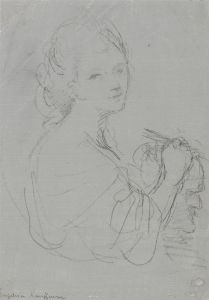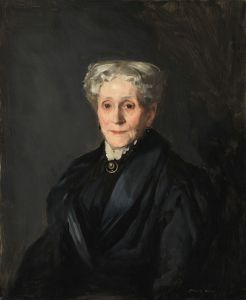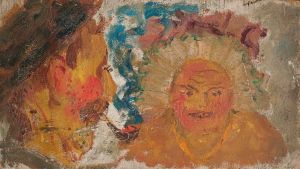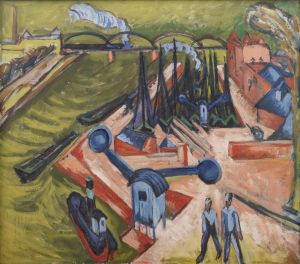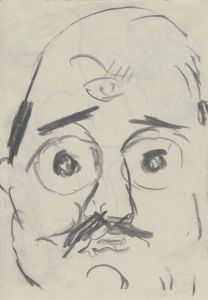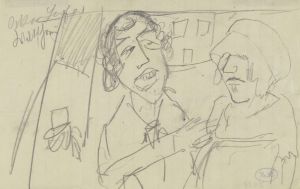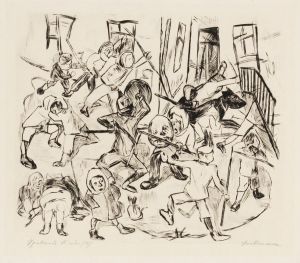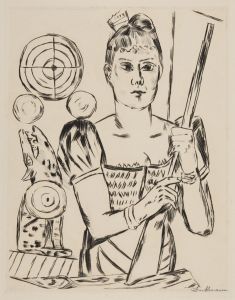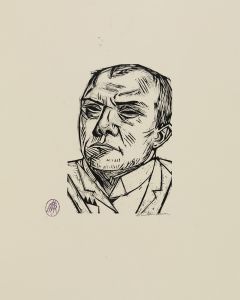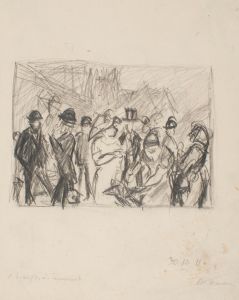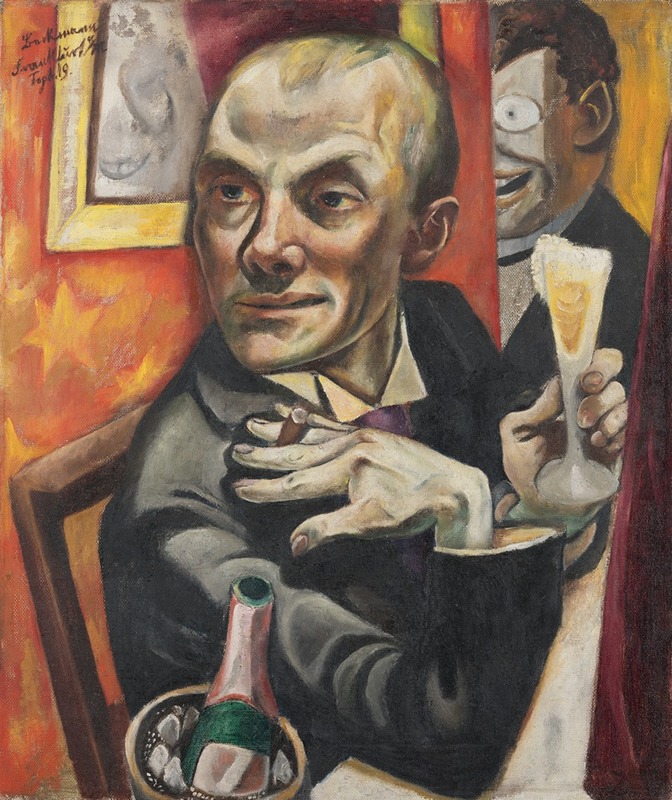
Self-Portrait with Champagne Glass
A hand-painted replica of Max Beckmann’s masterpiece Self-Portrait with Champagne Glass, meticulously crafted by professional artists to capture the true essence of the original. Each piece is created with museum-quality canvas and rare mineral pigments, carefully painted by experienced artists with delicate brushstrokes and rich, layered colors to perfectly recreate the texture of the original artwork. Unlike machine-printed reproductions, this hand-painted version brings the painting to life, infused with the artist’s emotions and skill in every stroke. Whether for personal collection or home decoration, it instantly elevates the artistic atmosphere of any space.
"Self-Portrait with Champagne Glass" is an oil painting created by the German artist Max Beckmann in 1919. Beckmann, a prominent figure in the Expressionist movement, is known for his vivid and often introspective self-portraits. This particular work is notable for its exploration of identity and the psychological depth it conveys.
Max Beckmann was born on February 12, 1884, in Leipzig, Germany. He became one of the leading artists of the 20th century, known for his unique style that combined elements of Expressionism and New Objectivity. Beckmann's work often reflected the turbulent times he lived through, including the aftermath of World War I, which had a profound impact on his art.
"Self-Portrait with Champagne Glass" was painted during a period of significant personal and societal change. The year 1919 was marked by the aftermath of World War I and the political upheaval in Germany. This context is essential to understanding the painting, as it reflects Beckmann's response to the chaos and uncertainty of the time.
In the painting, Beckmann depicts himself holding a champagne glass, a symbol that can be interpreted in various ways. The glass may represent celebration or indulgence, but it could also suggest a sense of irony or detachment. Beckmann's expression is contemplative, and his gaze is direct, engaging the viewer in a silent dialogue. The use of bold lines and contrasting colors is characteristic of Beckmann's style, emphasizing the emotional intensity of the work.
The composition of the painting is carefully constructed, with Beckmann's figure dominating the canvas. The background is relatively simple, allowing the focus to remain on the artist himself. This self-portrait is not just a representation of Beckmann's physical appearance but also an exploration of his inner world. The painting captures a moment of introspection, inviting viewers to consider the complexities of identity and self-perception.
Beckmann's self-portraits are renowned for their psychological depth, and "Self-Portrait with Champagne Glass" is no exception. The painting reflects Beckmann's ongoing exploration of his own identity and his place in a rapidly changing world. It is a testament to his ability to convey complex emotions and ideas through his art.
Throughout his career, Beckmann created numerous self-portraits, each offering a glimpse into his evolving self-image and artistic vision. "Self-Portrait with Champagne Glass" stands out as a significant work within this body of self-reflective art. It exemplifies Beckmann's skill in using the self-portrait genre to explore broader themes of existence and the human condition.
Max Beckmann continued to produce influential works until his death on December 27, 1950. His legacy endures, with his paintings held in major collections worldwide. "Self-Portrait with Champagne Glass" remains an important piece in understanding Beckmann's contribution to modern art and his exploration of the self through his distinctive style.





